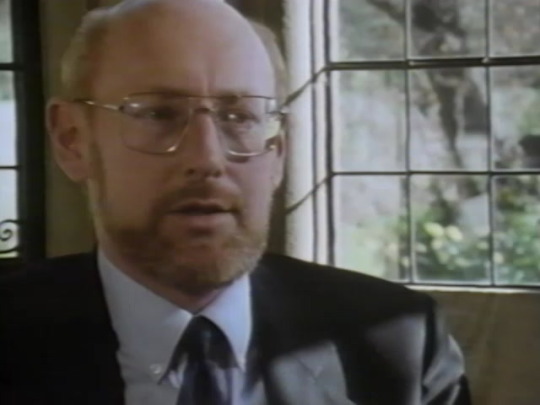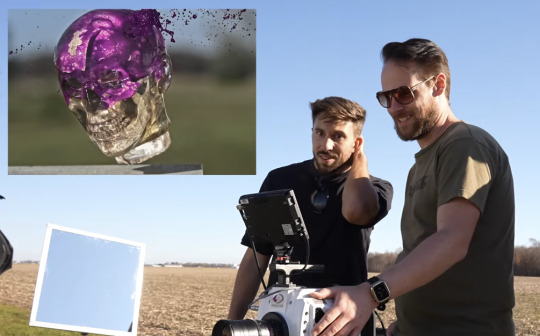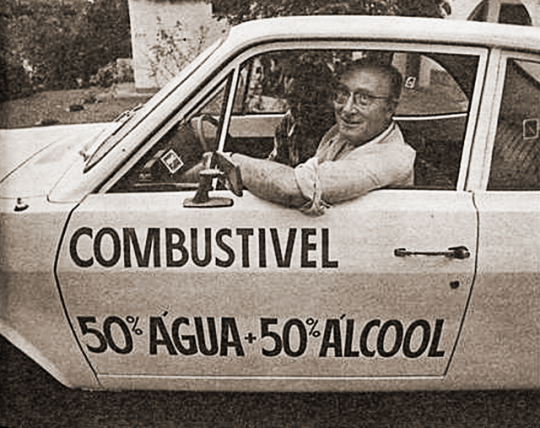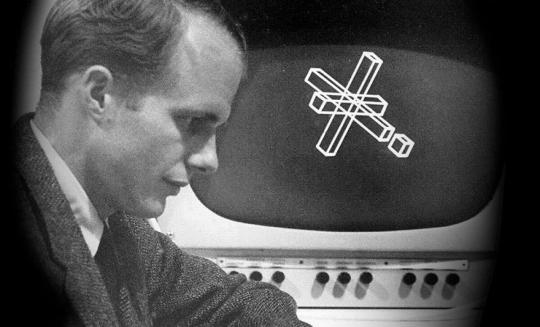#Internet inventors
Explore tagged Tumblr posts
Text
Reminder: It's neat covering a technology when its inventors are still around to talk about it
If you write about cars or aviation or rockets, you don't get to talk to the people who invented those things. But if you cover the Internet, you still have the legit privilege of being able to hear from the people who created it.
Friday afternoon had me in the audience at a tech event watching two older computer scientists discuss their work. That could be interesting in a variety of contexts, but it wasn’t just any two life-experienced CS types speaking at Project Liberty’s Summit on the Future of the Internet: Steve Crocker and Vint Cerf are pivotal to the Internet’s past, having helped to create the thing. It’s not a…

View On WordPress
#humblebrag#Internet founding fathers#Internet inventors#Internet pioneers#Sir Tim#Steve Crocker#TBL#Tim Berners-Lee#Vint Cerf#World Wide Web
0 notes
Text
#black history#africa#nigeria#black inventors#black people#black lives matter#blacklivesmatter#black excellence#internet
141 notes
·
View notes
Text

"Are people going topless today? I mean, I'm gonna keep mine on I think, but... you guys do you, I guess."
12 notes
·
View notes
Text
so if skrael/bellroc is skraelroc, and skrael/douxie is skrouxie, surely we can all agree that bellroc/douxie should be...
roc and roll?
;)c
#trollhunters#tales of arcadia#douxie casperan#skrael of the north wind#bellroc keeper of the flame#as the definite inventor of 'skraelroc' and definitely an accessory to 'skrouxie'#i feel like i owed the internet my latest attempt at dumb ship nomenclature#once again: i don't quite go here. but i see the vision!!#skraelroc#skrouxie
26 notes
·
View notes
Text
Netflix (the site where one of it’s main selling points was its lack of ads) now has ads, unless you pay extra to get rid of them.
Youtube has recently blessed me with full-length un-skippable ads, and once again removed my ability to block any ad I might take issue with.
I love not being able escape ads ever :)
#shut up ray#life is hell#and i know someone will be like ‘use an adblocker’ and i do… on my PC#my ipad doesnt have an adblocker i use the youtube app#cos its more convenient than having to load up my wheezing laptop just to watch some YouTube#i cant even escape to netflix to avoid ads anymore like i used to when i got rlly irritated w/ them#its just all the fucking time#TV? ads. literally any fucking site on the internet? ad. OUTSIDE???? NOPE MORE ADS YOU IDIOT YOU THOUGHT YOUD BE SAFE THERE?!?!??#STOP TRYING TO SELL ME SHIT IF I WANT A THING I WILL LOOK FOR THING AND BUY IT#i cant research shit using google cos the search results are wither unrelated garbage. AI nonsense or you guessed it: FUCKING SPONSERED ADS#im gonna find the inventor of capitalism and shit on their grave#advertisors i am hunting you down and hitting you w/ sticks and throwing rocks at you#like even w/ a fucking adblocker on my laptop almost every goddamn youtubr video has a fucking sponsered ad-read in the video#fuck you assholes#fuck your bag idc abt you i care abt my fucking sanity#the sanity which is getting more and more fragile each day on this hell planet#(srry earth i love you rlly its not ur fault capitalism blows)
9 notes
·
View notes
Text
02/11/2025 is National Emergency Number Day 🇫🇮, Safer Internet Day 🌎, Inventors Day 🌎, National Don't Cry Over Spilled Milk Day 🇺🇸, National Make a Friend Day 🇺🇸, National Peppermint Patty Day 🇺🇸, National Shut-In Visitation Day 🇺🇸, National White Shirt Day 🇺🇸, International Day of Women and Girls in Science 🇺🇳

#national emergency number day#safer internet day#inventors day#national don't cry over spilled milk day#national make a friend day#national peppermint patty day#national shut-in visitation day#national white shirt day#international day of women and girls in science
9 notes
·
View notes
Text

"It's pronounced 'JIF,' not 'GIF.' End of story." — Stephen Wilhite
#quote of the day#art#quotes#artist#คำคม#gif#animation#memes#Computer#internet#web#Stephen Wilhit#Legend#legendary#Invent#Inventor#Pioneer#leader
4 notes
·
View notes
Text
Clive Sinclair: The Anatomy of an Inventor (Video, 1989)
You can watch it in your browser here.


#internet archive#video#videos#documentary#documentaries#inventor#inventors#clive sinclair#zx80#zx81#zx spectrum#1989#1980s#80s
2 notes
·
View notes
Text
I'm not going to make this about my own home country Brazil, cuz first and foremost this post is about the portrayal of africa, but believe me, the treatment, belief and ignorance is pretty similar/the same. My dad was regularly teased by his coworkers that he used to live in a house made of mud, which like, not even the indigenous people of brazil live in mud houses as far as I'm aware. I think they make it out of wood??? Literally Brazil is full of so so many beautiful and incredible cities, but people just think HUR DUR AMAZON FOREST and CARNIVAL there is so much more to us than that
When I was in college, I was constantly so freaking frustrated that 90% of both literature and history classes (both stuff I needed for my major) was eurocentric/westerncentric. It was so damn hard to find ANYTHING about literally anyone else. Want to learn about X country? Sure! Here's what happened once europe got there- NO TELL ME ABOUT THE PEOPLE WHO LIVED THERE NOT THE EUROPEANS. The one history class I managed to find that didn't feature europeans at all was... drumroll please, the entire history of east asia starting as early as 10,000BC to present day, following china, japan, korea and mongolia. It was fantastic to find a class like that, but it was covering way too much for just one semester. Each one of those units should've been their own semester.
But what I really wanted to learn about was Africa, and all the countries there, and the african cultures. I never found a class for that. I remember in middle school, learning about the middle east and asking my teacher, "Hey, when will we learn about africa?" and she straight up, no joke told me, "Africa doesn't have a history." and I was baffled. There were people there right??? So surely they had to have a history! I asked her "What about Egypt? That's in africa" and she just completely.... ugh look at her response, "Egypt is considered part of the middle east narrative" AJDSFLKADSFLKMFADLKML
gawd, I'm not even from africa, I'm from BRAZIL, it's terrible the way the world just doesn't want to teach us about them. We have got to stop treating other cultures as lesser or not important, and ask ourselves about the narrative we're being given. I've been to South Africa too, it was wonderful, I loved Cape Town. But I wonder how much of my feelings come from genuine "Oh I should question the narrative" and how much of them comes from my own experiences about how people have treated my own home country and its narrative and realizing it's the same for other places too
Someone said "Are you really so stupid to think that Africa has the same technological advances as us? If they did they would probably have clean water and not live in houses made of sticks and mud. Get over yourself and stop being so ignorant."..... Below is a tiny collection of images of the Africa they refuse to show you..




ches






I’m sorry you’ve been made to believe that the whole of Africa is poor, I really am..
#africa#narratives#wowwww#sorry didn't mean to go off#you all have no idea#the kinds of comments I've received#of people looking down at my country#and I'm like#????????????#my dude the first motorized flight ever in history was invented and done BY A BRAZILIAN INVENTOR (look it up)#As bad as the internet can be#I'm also blessed to live in an age where I can more easily find information about africa online#but still#the only africa narrative they push in schools#is the poverty one#they don't tell us about their cities#or ancient cultures of the past#it's...#idk
787K notes
·
View notes
Text
Was reminded that the invention of the telephone was kind of a scandal of not giving credit where it's due, which then immediately reminded me of the same thing happening with the lightbulb. so I went to look up the name of the Black man who was instrumental in the creation of this invention- his name is Lewis Latimer by the way, he created the carbon filaments that incandescent lightbulbs have in them- only to find out HE HELPED ON BELL'S TELEPHONE PATENT TOO
#this guy is instrumental in the LIFESTYLE WE LIVE IN TODAY#all of that internet and electronics around our homes we have now were built on the foundations that HE helped build#according to wikipedia the work he did for Bell was as a draftsman to draft out the drawings to be used in patents#but he went to work for Edison LONG after he had already done tons of work on creating lightbulbs#it says in 1879 he was working for Hiram Maxim and had already done a ton of work for them in creating electronic lighting#and then only in 1884 did he start working for Edison#edison inventor of the lightbulb my ass give Lewis Latimer the credit he deserves
0 notes
Text
recently i watched a youtube video of a guy designing + manufacturing + assembling a "Nerf" rifle from scratch that can shoot a dart at literally the speed of sound, which was obviously cool and all, but even more recently he did a followup video where he tested it more thoroughly on ballistics gel/dummies in front of high speed cameras. and at one point instead of foam darts they shoot a lead slug at a ballistics gel model of a human head and it just fucking. explodes.

and there's a fantastic shot at 17:22 where you get to watch the inventor's face as he watches that slow-mo footage back and realizes "oh my god I posted instructions on how to make a murder weapon on the internet"


"what hath these wicked hands of mine wrought..."
5K notes
·
View notes
Text

"Gemerl, what the hell was that?"

"Reflex check. I was checking his reflexes."

"You could have seriously hurt him!"

"He shouldn't have failed the reflex check."
#the inventor | tails#reborn gizoid | gemerl#check the internet lately? | dash commentary#shadakai#hey at least you made eventide happy#strange isn't it? | crack
16 notes
·
View notes
Text
OK. IN MY DEFENSE. MY BACKGROUND KNOWLEDGE ABOUT STAR TREK? ZILCH. VIRTUALLY NONEXISTENT.
I thought people would be like “why are you shipping Spock, he’s aroace coded?!?”
I DIDN’T KNOW THEY WERE FANDOM FOUNDING FATHERS. THEY DON’T TEACH THESE THINGS IN SCHOOL.
hey gamers I’ve started watching star trek does anyone else see the romantic tension between captain kirk and mr. spock
#this is not common knowledge right… right? this happens all the time and I’m not the only one who has done this right?#this is actually so embarrassing. I was being so for real and I find out I’m talking about THE INVENTORS OF SLASH???#I know for some of you this may be a little hard to believe but I had no prior knowledge of Star Trek.#yes I literally started watching it with no prior knowledge and literally said to myself “does anyone else ship them?”#I actually thought no one else or only a small niche part of the internet would have shipped them.#thing is. I THOUGHT I had a little bit of prior knowledge but nope. I did not even have that little bit.#I’m glad it’s a popular ship and I’m not the only one that saw the vision. not MERELY the only one that saw the vision.#I’m genuinely so baffled about this. I can’t believe it happened but it’s also hilarious#spirk#k/s#see i learned that too teehee
89K notes
·
View notes
Text
Carro a água, não dá?!?
Existe uma lenda em torno do “carro movido a água” que já vem de muito tempo, mas será que realmente existiu essa tecnologia e, principalmente, que um complô de fabricantes da indústria teria matado seu inventor?Ricardo de Oliveira – Notícias Automotivas. 13 set 2023 Na internet, encontra-se nomes associados com a suposta tecnologia, como Stanley Meyer e Jean Chambrin, dois supostos inventores…

View On WordPress
#carromovidoaagua hidrogenio carroahidrogenio#ano 2015#assassinados sumiram do mapa# HIDROX HHO AGRO VERDE#água misturada etanol álcool#Bruno Garattoni Superinteressante#CARRO MOVIDO A ÁGUA POR QUE O INVENTOR SUMIU? Não Adivinho#CARRO movido a ÁGUA. Entenda se o CARRO MOVIDO A ÁGUA vale a pena! Conversão da ÁGUA para HIDROGÊNIO Engenharia Detalhada#Carro movido a água funciona mas não é permitido no Brasil#carro movido água#célula combustível oxigênio#cidade de Florianópolis Santa Catarina Brasil#complô fabricantes indústria#eletrólise da água#eletricidade bateria lítio japonesa Toyota sedã Mirai#Estequiometricamente#Existe mesmo um carro que roda a água#gênio Brazilian#H2O hidrogênio oxigênio#infraestrutura específica H2#Insumos agrícolas base CO₂#internet#lenda legend#mas mataram o inventor? Ricardo de Oliveira Notícias Automotivas#nomes associados#primeira empresa brasileira#produção hidrogênio oxido HHO verde H2V#reportagem dados técnicos científicos#Sandro inventores#segredo queima motor a combustão
0 notes
Text


He changed the world. R.I.P. inventor of the PDF.
(LATimes) Column: Farewell to John Warnock, an internet pioneer whose invention actually made the world better By Michael Hiltzik, Business Columnist Aug. 23, 2023
In June 1969, John E. Warnock achieved a milestone of sorts at the University of Utah by producing the shortest PhD dissertation in the university’s history.
A masterpiece of conciseness at 32 pages, the paper set forth a solution to the “hidden line problem,” which applied to how computers could draw the outline of a form partially hidden behind another — for example, part of a triangle obscured by a ball — so that all the visible sides and angles line up convincingly.
Warnock, who died Saturday, went on to become one of the leading computer scientists of his era and co-founder in 1982 of Adobe Inc.
"They just sat there in the meeting with blank stares. They had no idea what I was talking about." — John Warnock, describing the reaction of IBM executives to his desktop publishing software
For those of us tethered to the computer in our professional or personal lives, his more momentous role is that of co-inventor of the PDF, the “page description format” that allows documents to appear on screen and be printed out as their creator intended, no matter which software or hardware is used to create them.
The PDF standard revolutionized desktop publishing. It’s a required, or at least preferred, format for court filings, academic papers, consumer manuals — virtually every imaginable document in our increasingly paperless society.
And it originated in a project code-named “Camelot” that Warnock launched at Adobe in 1991, when the company was still working to establish a comfortable niche in what was turning into an internet-connected world.
Camelot yielded another concise paper — six pages that outlined a vision for a software suite that would allow users to “capture documents from any application, send electronic versions of these documents anywhere, and view and print these documents on any machines.” The suite that followed was known as Acrobat, and its underlying format was the PDF.
Warnock’s career traces the path of the computer industry in its earliest days. In the 1960s, the University of Utah became an important center of the still-fledgling discipline of computer science — so important, indeed, that in December 1969 it was among the first four nodes (along with UCLA, UC Santa Barbara and the Menlo Park-based research firm SRI) to be interconnected by the ARPANET, the network funded by the Pentagon’s Advanced Research Projects Agency and the precursor to the internet.
Utah’s specialty was computer graphics. Among Warnock’s fellow students was Edwin Catmull, who would eventually become president of Pixar and Walt Disney Animation Studios and who created, as a student project, a short video in which his left hand was converted into a computer image, a landmark in 3-D rendering. Warnock’s PhD thesis advisors were Utah professors David Evans and Ivan Sutherland, whose company, Evans and Sutherland, produced pioneering flight simulators.
Warnock was a member of a generation whose work transformed ordinary life as never before. The 1970s (including a few years preceding and following that decade) were a period of extraordinary innovations.
In 1968, Douglas Engelbart of SRI staged what has gone down in history as “the mother of all demos,” introducing hyperlinks, the mouse, videoconferencing and other inventions to a rapt audience in San Francisco. ARPANET was launched in 1969.
Xerox’s Palo Alto Research Center, the legendary Xerox PARC, was established in 1970; in 1973 its first personal computer — the first personal computer — became operational, with an animated image of Sesame Street’s Cookie Monster flashing across its screen.
The IBM Personal Computer was introduced in 1981 and the Apple Macintosh, arguably the first consumer desktop computer, in 1984.
Since then, technological innovation seems to have regressed into a morass of cryptocurrency scams, new ways to invade personal privacy, and robotaxis that collide with emergency vehicles, block traffic and drive themselves into wet cement. (One notable exception: the truly life-saving development of COVID-19 vaccines in record time.)
Warnock and his longtime professional partner, Charles M. Geschke, first collaborated at Xerox PARC. As I reported in my 1999 book about PARC, “Dealers of Lightning,” there they worked to create a program to reconcile the incompatible image resolutions of computer screens and laser printers (another PARC invention).
Documents that looked perfect on the screens of PARC’s personal computer, the Alto, turned into unintelligible gibberish when printed out. That made a mockery of another PARC innovation, Bravo, a word processing system built on the principle of “what you see is what you get,” or WYSIWYG, meaning that the image on the screen could display varied fonts, boldface, shadows, even Russian cyrillic or Japanese kanji characters — and that the same features would appear on a printed page.
Warnock, Geschke and several collaborators finally invented Interpress, through which a printed document appeared exactly as it did on the screen. They then entered the hell of trying to persuade Xerox to integrate Interpress into its laser printers and other typographical products.
The experience prompted them to leave Xerox, joining a vanguard of PARC scientists and engineers who carried PARC’s DNA into the outside world, frustrated at the company’s inability to market their inventions to businesses and consumers.
“We spent months traveling around to all the divisions within Xerox and back to corporate selling this idea,” Warnock would recall. Xerox eventually agreed to make Interpress a component of its entire product line, but refused to announce it until every product could be reengineered to accommodate it, a process that would take years.
Crestfallen, Geschke and Warnock told themselves, “We’ve spent two years of our lives trying to sell this thing and they’re going to put it under a black shroud for another five,” Warnock recalled. “You were seeing PCs get announced, and Apples, and it became sort of depressing.”
They left to found Adobe. After some false starts they settled on a business plan that would turn Adobe into a billion-dollar company by 1999: the development of an Interpress-like typesetting program. This became Postscript, which was first bundled into Apple printers and soon became the de facto standard for computer printing. (Geschke died in 2021; he and Warnock served as Adobe’s co-chairmen until 2017.)
Adobe became known for other aids to desktop publishing and professional imaging, notably Photoshop, which enables photographs to be altered in seemingly infinite ways. Its digital software, including Photoshop and Acrobat, its PDF-producing tool, remains the core of its business, which recorded $4.8 billion in profits on $17.6 billion in sales last year.
Acrobat was an offspring of Postscript. To Warnock’s dismay, Acrobat was an unaccountably hard sell.
“Nobody got it,” Warnock recounted. In a meeting at IBM, “I explained how it worked, what its advantages were and how, from any application, you could send a completely portable document across platforms. They just sat there in the meeting with blank stares. They had no idea what I was talking about.”
Soon, influential users did get it. “The Centers for Disease Control was one of our earliest and most fanatical adopters,” Warnock recalled. “They said, ‘Do you know how many people’s lives we can save by sending these documents out to all of the field offices?’”
Yet most people still “didn’t understand how important sending documents around electronically was going to be.... And in 1994, the world wide web hit, and then everybody said, ‘Oh, well, you can use Acrobat to send documents.’ What a concept!”
Before then, even the Adobe board had toyed with killing Acrobat. “I said, ‘There’s just no way. This is solving an important problem, and we are going to hang in there until it works.’”
PHOTOS: John Warnock, co-founder of Adobe. (Adobe Inc.) John Warnock at the University of Utah in 1969 (Adobe Inc.)
#refrigerator magnet#adobe#pdf#john warnock#graphic design#page description format#design#internet#pioneer#inventor#acrobat#photoshop#postscript#michael hiltzik#los angeles times
0 notes
Text

Remember when I talked about inventor Cas (1, 2, 3) and vigilante Dean (4)? Well, I'm back, thanks to @colorlessjay and our wonderful brainstorming >:)
I want to expand on The Hunter. Jay (can I call you Jay?) suggested the idea of vigilante Dean, guy in the chair Sam, and tech guy Ash. Gadget guy Castiel is for later, and until then, Dean uses whatever Sam can afford along with whatever Ash can make.
Becoming a vigilante was an accident. Stanford era, the news caught wind of Dean's hunting and declared him a serial killer. But conspiracy theorist Ange1ofScience proved that the killings were stopped every time Dean Winchester rolled into town and the internet went wild. A real life vigilante.
Dean says fuck it, I'm saving people, and goes along with it. So, pilot episode, Dean breaks into Sam's apartment, and instead of hitting us with the "Dad's on a hunting trip," we get a confident declaration of "Sammy, I'm Batman."
The Hunter is born in the back of Ash's van through a budget Batman costume, a bulletproof vest, and a very forced deep voice (they all tell Dean to stop doing the voice). Dean dubs the back of Ash's van The Dean Cave.
808 notes
·
View notes